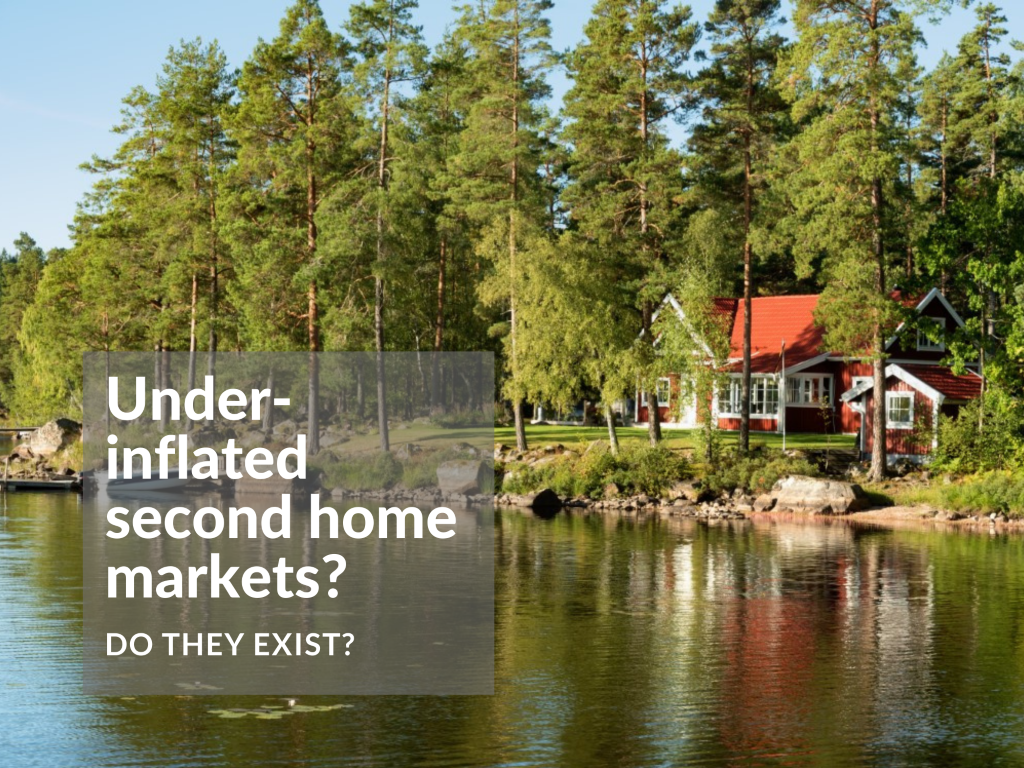Prices are rising around the country, and the same is true for vacation homes. As a growing number of people can “work from anywhere,” areas with natural beauty have seen surging demand.
We expected to see inflated prices in famous, high-profile vacation areas: Tahoe, Montana, and others we hear about all the time.
What we did not expect to see that was that even the second-tier of lesser-known vacation spots have also shot up in price.
Third in line are places that only the locals might know about – often small lakes within a couple of hours of a city that do not attract visitors from far and wide. Yet again, many of these were starting to pick up in price — Lake Texoma, near Dallas is one of them.
We found only a few spots that could be considered to be at an early stages of price growth. I’ll reveal those in a moment.
First, what is a vacation home market?
Vacation homes are different things to different people. We decided to make a few general assumptions about where these markets are located: outside of cities and near natural features that make the locations desirable. The natural features could be a body of water or a large park, such as a national park, state park, or national forest. This describes many typical vacation homes near a lake, mountain, or forest.
What does an inflated market look like?
A simple characterization of a bubbly market is one that has “excessive” price increases. We looked at vacation home areas at a detailed level to see how much prices went up over the last year, or, more specifically, between March 2020 and March 2021. We categorized the areas by price: low, average and high, and then did the same for price growth.
A market that is not inflated should ideally meet two criteria: average prices (or lower) and low price growth, compared to all vacation home markets across the country. This requirement eliminated almost everything in the western states, leaving a scattering of about 200 small areas surrounding lakes and parks mostly across the eastern half of the country. Of these, less than 100 were significant in terms of having at least 1,000 owner-occupied homes, and less than 25 had a very significant (3,000 or more) number of owner-occupied homes.
What about the last few months?
A lot has happened since March, where the initial pricing screen ended based on quarterly price indices. Some markets have seen explosive price growth in the last two months since then. What surprised us was how often this was happening even in lower-profile locations.
What surprised us was how often rapid price growth was happening even in lower-profile locations.
We did a deep dive into recent price movements in each area, by looking at local automated-valuation model charts displayed on active home listings. Based on a sharp uptick in prices over the last two months, we excluded least three-quarters of the 25 shortlisted markets as being potentially too frothy.
What was left?
Only a few areas stood out as potentially being still in the early days of price increases:
The area around Waterloo State Recreation Area, between Jackson and Ann Arbor, Michigan. While relatively low-profile, this forested pocket of land about an hour west of Detroit contains some vacation homes that haven’t spiked much in price.
The next three are at least a few hours from any major city:
Ruidoso and Cloudcroft, New Mexico. Well-known by West Texans as a great escape from the heat of the surrounding deserts, this mountain town sits on a band of pine forest that runs through the southernmost reaches of the Rocky Mountains.
John H Kerr Reservoir area, near Clarksville, Virginia and West Point Lake, near LaGrange, Georgia. Both of these are large lakes dotted with large vacation homes nestled within the trees.
Also, locally, many of the East Texas lakes fared relatively well, especially those farthest east along the border with Louisiana.
Is it time to buy?
With the spikes we have seen in most markets, it is an indication that the market is too hot. Our advice – wait it out for more inventory to enter the market.

